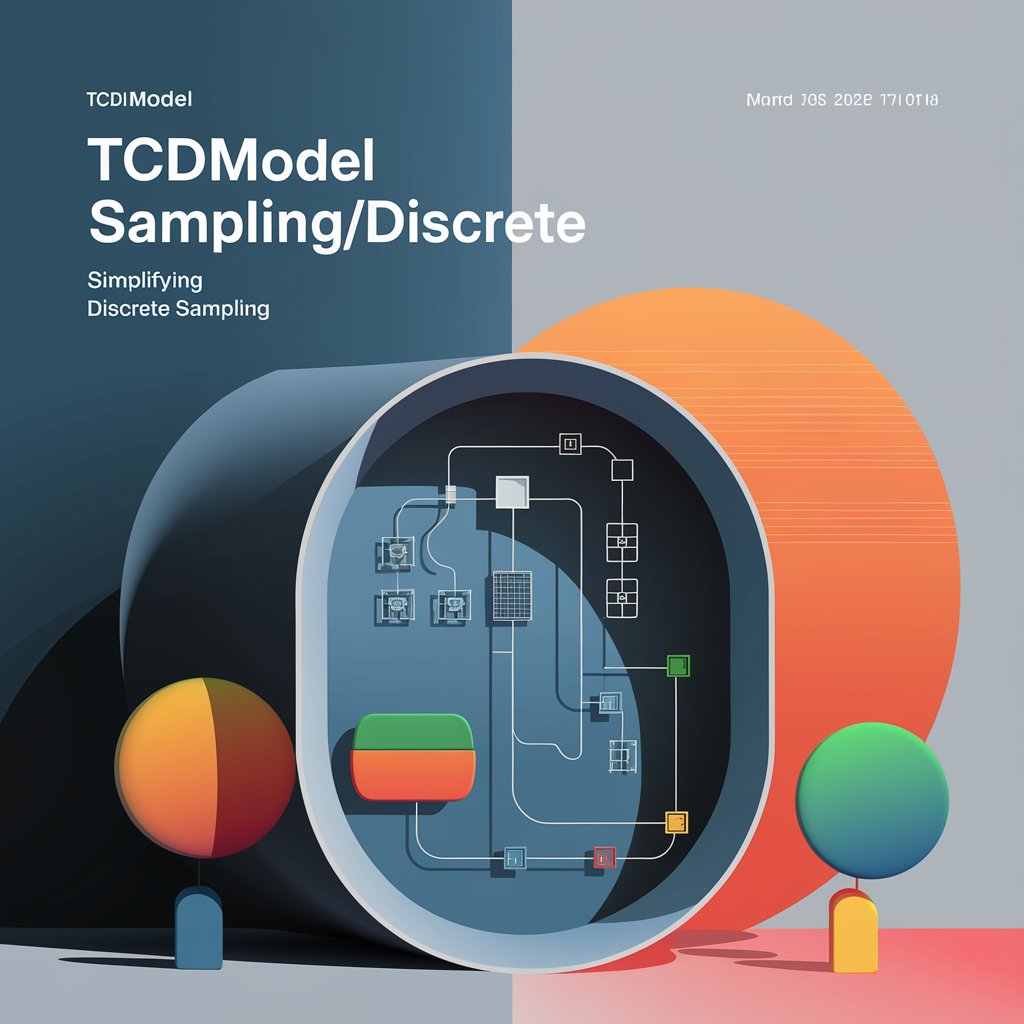Comprehensive Guide to TCDModelSamplingDiscrete: Understanding and Implementing Discrete Sampling Solutions
Introduction
In the ever-evolving field of data science and machine learning, efficient sampling methods are crucial for handling complex datasets and deriving meaningful insights. One such method is TCDModelSamplingDiscrete, a noteworthy development in discrete sampling solutions. This comprehensive guide aims to provide an in-depth understanding of TCDModelSamplingDiscrete, exploring its significance, functionalities, and applications.
TCDModelSamplingDiscrete is a notable advancement in discrete sampling solutions. It offers a simplified approach to discrete sampling, making the process less complex and more efficient.
By the end of this article, you will have a thorough understanding of how TCDModelSamplingDiscrete works, its advantages, and how it can be effectively used in various scenarios.
What is TCDModelSamplingDiscrete?
TCDModelSamplingDiscrete is an advanced technique used for discrete sampling in statistical models. Discrete sampling refers to the process of selecting specific, distinct values from a set, as opposed to continuous sampling which deals with a range of values. TCDModelSamplingDiscrete simplifies and enhances the process of discrete sampling by providing a more streamlined and efficient approach.
Key Features of TCDModelSamplingDiscrete
- Simplified Discrete Sampling: TCDModelSamplingDiscrete offers a less complicated method for sampling discrete data. This is particularly useful in models where discrete variables are involved, simplifying the sampling process.
- Enhanced Efficiency: The technique improves the efficiency of sampling processes by reducing computational complexity. This means faster processing times and more accurate results.
- Versatility: TCDModelSamplingDiscrete can be applied to a variety of data types and models. Its versatility makes it a valuable tool for data scientists working with discrete data.
- Robust Modeling: By integrating TCDModelSamplingDiscrete into statistical models, users can achieve more robust and reliable results. This is especially important in fields requiring high precision and accuracy.
How TCDModelSamplingDiscrete Works
To understand TCDModelSamplingDiscrete, it is essential to grasp the basic principles of discrete sampling and how this model improves upon traditional methods.
- Discrete Sampling Basics: Discrete sampling involves selecting individual values from a discrete set. This could be as simple as choosing specific integers or more complex like selecting specific categories from a dataset.
- Model Implementation: TCDModelSamplingDiscrete uses algorithms and statistical methods to perform discrete sampling. The model optimizes the selection process, ensuring that the sampled data is representative of the larger dataset.
- Algorithm Efficiency: One of the key advantages of TCDModelSamplingDiscrete is its algorithmic efficiency. The model uses advanced techniques to minimize computational overhead and streamline the sampling process.
Applications of TCDModelSamplingDiscrete
- Data Analysis: In data analysis, TCDModelSamplingDiscrete can be used to sample discrete data points, allowing for more manageable datasets and faster analysis.
- Machine Learning: In machine learning, discrete sampling is often required for feature selection and model training. TCDModelSamplingDiscrete enhances these processes by providing more accurate and efficient sampling methods.
- Statistical Modeling: For statistical models that involve discrete variables, TCDModelSamplingDiscrete offers a reliable method for sampling, improving the overall quality of the model.
- Quality Control: In manufacturing and quality control, TCDModelSamplingDiscrete can be used to select specific samples for testing, ensuring that the samples are representative of the entire production batch.
Advantages of TCDModelSamplingDiscrete
- Increased Accuracy: By providing a more efficient sampling method, TCDModelSamplingDiscrete helps in achieving higher accuracy in data analysis and modeling.
- Reduced Complexity: The model simplifies the process of discrete sampling, making it easier for data scientists and analysts to work with discrete data.
- Faster Processing: With improved efficiency, TCDModelSamplingDiscrete reduces the time required for sampling and processing, allowing for quicker results.
- Better Resource Management: By optimizing the sampling process, the model helps in managing computational resources more effectively.
Challenges and Considerations
While TCDModelSamplingDiscrete offers many advantages, there are also some challenges and considerations to keep in mind:
- Implementation Complexity: Integrating TCDModelSamplingDiscrete into existing systems may require significant changes to the current setup.
- Data Quality: The effectiveness of the model depends on the quality of the input data. Poor data quality can affect the accuracy of the results.
- Computational Resources: While the model is designed to be efficient, the initial setup and integration may require substantial computational resources.
FAQs
1. What is the primary benefit of using TCDModelSamplingDiscrete? The primary benefit is its ability to simplify and enhance the discrete sampling process, leading to more accurate and efficient results.
2. How does TCDModelSamplingDiscrete improve computational efficiency? It uses advanced algorithms to optimize the sampling process, reducing computational overhead and processing time.
3. Can TCDModelSamplingDiscrete be used for continuous data? No, TCDModelSamplingDiscrete is specifically designed for discrete data. For continuous data, other sampling methods would be more appropriate.
4. What are some common applications of TCDModelSamplingDiscrete? Common applications include data analysis, machine learning, statistical modeling, and quality control.
5. Are there any limitations to TCDModelSamplingDiscrete? Challenges include the complexity of implementation, dependence on data quality, and initial resource requirements for setup.
Conclusion
TCDModelSamplingDiscrete represents a significant advancement in discrete sampling techniques, offering enhanced efficiency, accuracy, and simplicity. By understanding and leveraging this model, data scientists and analysts can improve their sampling processes and achieve better results. Its applications across various fields highlight its versatility and importance in modern data analysis and modeling.
With this comprehensive guide, you now have a deeper understanding of TCDModelSamplingDiscrete, its features, applications, and advantages. Whether you’re involved in data analysis, machine learning, or statistical modeling, incorporating TCDModelSamplingDiscrete into your workflow can provide valuable benefits and insights.






